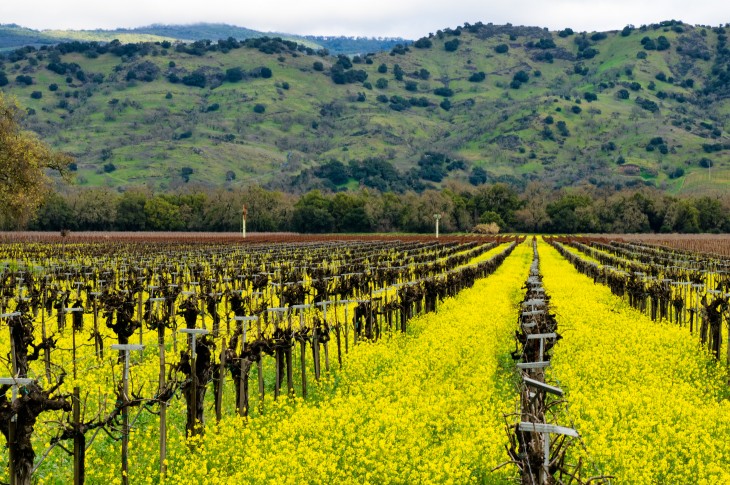
One of the best kept secrets among fine wine collectors is Californian wines from the 1970s or if you can find it, from the 1940s. From Dunn, Mondavi Reserve, Diamond Creek to Beaulieu Vineyard’s Georges de Latour, Stag’s Leap Wine Cellars and Ridge, the 1970s produced some amazing wines, with most of them below 13% alcohol and not slathered in new oak.
It was Californian wines from this decade that won in the 1976 Judgement of Paris tasting where they beat their Bordeaux first growth counterparts. Held 30 years ago, the winning wine, 1973 Stag’s Leap Wine Cellars Cabernet, bested first growth Bordeaux like Mouton Rothschild and Haut-Brion in a blind tasting. It was a boost of encouragement to an industry that was just starting out and marked a turning point in the growing confidence of Californian wines.
But over the years, starting in the 1990s, the wines started to change shape and size – growing bigger, riper, sweeter, more concentrated, oaky and higher in alcohol. So what happened, I ask Brad Grimes, winemaker at Abreu Vineyards. “It was all about chasing points,” he replies. As small wineries began to surface in California, many had dreams of achieving the elusive 100 points, which were generously handed out in warm vintages like 1994 and 1997 by American critics like Robert Parker and James Laube for Wine Spectator. Cooler vintages, with less ripeness and a more European profile were pushed aside while concentrated, dried fruit-filled vintages were preferred and commanded higher prices.
Not everyone followed the bigger is better trend. Christopher Howell, the winemaker and general manager of Caine Vineyard & Winery, is one of them. “Our values never changed,” says Howell. “The style of wines we make are so out of fashion, that they’re now back in fashion.”
When I ask what Howell does differently from other producers who are making modern, concentrated Napa Cabernets, Howell replies, “It is what we don’t do that matters. We don’t inoculate [adding packaged yeast is common practice in California], we don’t manage or correct the acidity, alcohol or tannins and we don’t make exotic additions like MegaPurple [a food additive to enhance color and taste] for example. We choose not to manipulate the wine. We feel this leads to a more engaging and satisfying wine.”
There are a handful of producers in California like Howell who have always pursued balance and freshness over power – for example Cathy Corison, Randy Dunn, Paul Draper, Mike Chelini and Josh Jensen. Recently groups like the Renaissance des Appellations, In Pursuit of Balance, the Seven-Percent Solution, and the natural wine movement are swinging the balance towards the philosophy ‘less is more’.
Jon Bonne’s influence over the past nearly ten years as the former San Francisco Chronicle’s wine columnist has also played a part in this movement. He has championed the small growers making hand-crafted wines and his book, The New California Wine, showcased producers whose wines are the antithesis to the rich, unctuous, high alcohol wines popular in the late 1990s and 2000s. Bonne’s book is often referred to as a ‘manifesto against the reign of big flavor’ but there is also criticism within the Californian wine industry that he goes too far in criticizing the unctuous and highly rated big wines that are much-loved and collected by wine lovers around the world.
Howell seems oblivious to the trends around him, though as a thoughtful, philosophy-major-turned-winemaker, he is attuned to changing tastes. “We are looking for complete wines that will stand the test of time,” he explains. “So rather than following the thread of evolving wine fashion, Cain wines are more a statement of consistent intention.” Howell is pensive and becomes philosophical. “Wine has held an enduring fascination for humanity precisely because it ties us back to nature, a place, a vineyard, a vintage, and because of its inherently elusive character which we can only perceive through our senses and our sense of beauty. In fact, wine connects us to our humanity.”
In February 2016, I tasted a vertical of Caine Five, a blend of Bordeaux varieties, and could sense what Howell was inferring to. His ‘statement of consistent intention’ is there in the wines – they reflect the stressful conditions of Spring Mountain, the cool growing conditions from high altitude that gives rise to tough, firm tannins and the elusive, haunting quality that offers a peek into the mystery of nature.
I raise my glass to winemakers like Howell, who is not a slave to fashion, who nurtures rather than manipulates the wine in the cellar, who believes that great wines, like great people, are not without flaws; in fact it may be the small imperfections that make some wines (and special people) distinctive, unique and ultimately, unforgettable.
image copyright: Napa Valley Vintners









